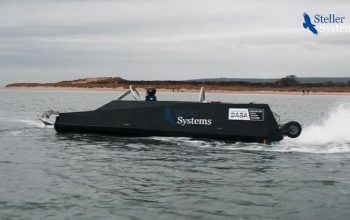Among America’s few seafaring presidents, former President George H.W. Bush passed away Nov. 30 at his Houston, Texas home at the age of 94. Bush enlisted in the US Naval Reserve June 13, 1942 on his 18th birthday after the attack on Pearl Harbor in December 1941. He had preflight training at the University of North Carolina at Chapel Hill and became one of the youngest naval aviators. He was commissioned as an ensign in the US Naval Reserve June 9, 1943, days before his 19th birthday.
Bush was assigned to Torpedo Squadron (VT-51) as photographic officer in September 1943. As part of Air Group 51, his squadron was based on USS San Jacinto, part of Task Force 58 which participated in operations against Marcus and Wake Islands in May, and then in the Marianas during June 1944. The task force triumphed in one of the largest air battles of the war. Returning from the mission, his aircraft had to make a forced water landing, and then rescued by the destroyer, USS Clarence K. Bronson. On July 25, Ensign Bush and another pilot received credit for sinking a small cargo ship.

During his service as a Navy pilot, Bush had a hit on his aircraft and was rescued by a submarine. According to Naval History and Heritage Command archives, after Bush was promoted to Lieutenant Junior Grade Aug. 1, San Jacinto commenced operations against the Japanese in the Bonin Islands, 600 miles south of Japan. Bush piloted one of four aircraft from VT-51 that attacked the Japanese installations on Chi Chi Jima in Sept. 1944. Although Bush’s aircraft was hit and his engine caught fire during the attack, he was able to complete the mission and bail out successfully. He was rescued by a Navy submarine, the USS Finback. Tragically, his two crew members were killed.
Naval History and Heritage Command archives also state that Bush returned to San Jacinto in November 1944 and participated in operations in the Philippines. When San Jacinto returned to Guam, the squadron, which had suffered 50 percent casualties of its pilots, was replaced and sent to the United States. Throughout 1944, Bush had flown 58 combat missions for which he received the Distinguished Flying Cross, three Air Medals, and the Presidential Unit Citation awarded San Jacinto. Bush was reassigned to Norfolk and put in a training wing for new torpedo pilots. Later, he was assigned as a naval aviator in a new torpedo squadron, VT-153. With the surrender of Japan, he was honorably discharged in September 1945, and then he entered Yale University. (U.S. Navy video/Released)















